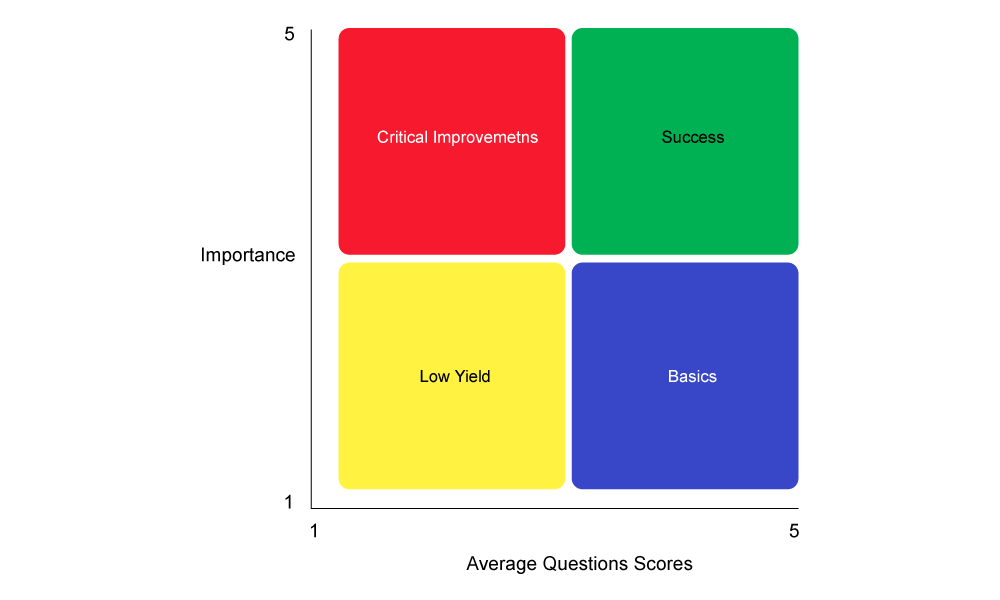The annual Federal Employee Viewpoint Survey (FEVS) is a valuable measure for making comparisons between federal agencies, departments and even year-over-year assessments. However, government organizations need to do more than just compare themselves to static benchmarks—they need to delve deeper into the results to learn their unique story. The story comprises the underlying issues that support employee satisfaction or deter it from thriving. These factors are different and unique for every office, agency and department.

On the surface, it is tempting to focus on lower-performing survey questions as the catalyst for improving employee satisfaction. These lower-performing questions appear to be low hanging fruit that will power the change needed to meet departmental goals and raise employee satisfaction.
>>> Download our FEVS eBook to help you obtain optimal value from your FEVS results.
Through our work with agencies across the Federal Government, we have found that fixating on just the lowest scoring questions has little effect on improving overall engagement. More often, we’ve found that an agency’s story unfolds through the process of a Key Driver Analysis, which is an analysis that identifies the greatest opportunities to improve overall engagement.
What is Key Driver Analysis?
Through Key Driver Analysis, federal agencies can study one question from the FEVS (e.g. Overall Employee Satisfaction) and compare it to the results of all other questions. The more closely related a question is to overall satisfaction, the more ‘Important’ the question. When the performance, or average score, of each question is layered in, federal agencies can catergorize and prioritize their focus on what will give the biggest boost to satisfaction.
How to Focus on the Right Federal Employee Viewpoint Survey Questions
Below is how EconSys categorizes your each FEVS survey question and how to interpret each category. Through this analysis you shift your prioritization from prioritizing lower-performing question to high-impact questions. The result is a ranking of all the questions, in these four categories.
- Successes (High Score, High Importance) are questions where the agency scored relatively high and are strongly associated with overall satisfaction. These questions are already high-scoring, and there is little benefit to trying to develop these areas further as they are largely responsible for driving the employee satisfaction your agency already has today.
- Critical Improvements (Low Score, High Importance) represent items where the agency scored relatively low, but are strongly associated with overall satisfaction. These are areas that offer the greatest potential for the government organization to boost employee satisfaction. Critical improvement questions are the low hanging fruit that can most drastically increase satisfaction.
- Basics (High Score, Low Importance) are areas where the organization received high scores, but have relatively lower correlations to overall satisfaction levels.
- Low Yields(Low Score, Low Importance) are the agency’s lowest scoring items with the lowest importance. Focusing on these areas should have little to no effect in improving satisfaction throughout the organization. These questions are the false positives. Without a Key Driver Analysis, your team may be tempted to focus on improving the results of these questions, but will not see a great lift in overall employee satisfaction.

FEVS results provide a wealth of information and opportunities for agencies to learn more about its workforce’s perceptions. But in order to best harness that information, agencies need to understand and triage it. EconSys Employee Engagement tools accomplish this by presenting advanced analytics with intuitive data visualizations, which pinpoint trends and areas in need of improvement. The net result is a richer, more complete understanding of how to prioritize your FEVS data so that you can create high-impact improvement plans for the coming year.
Schedule a call with us today to learn more about how EconSys and our data analysis solutions help federal agencies gather more insights from the Federal Employee Viewpoint Survey and improve employee satisfaction.

